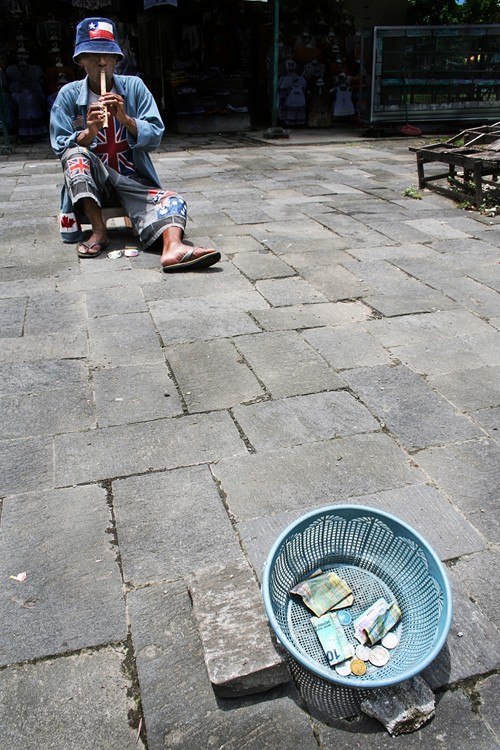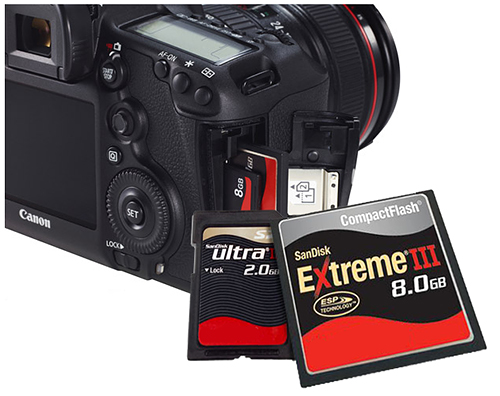
Sensors allow DSLR cameras to capture light and produce the digital image. It is, in short, the heart of a DSLR camera. Because they are charged, they have a strong tendency to attract dust particles. Properly keeping the lens cap on when the camera is not in use would usually be enough to protect the sensor from dirt. Of course situations may still arise that can dirty up the sensor and this would necessitate opening the camera and cleaning the component.
These notes on cleaning your digital camera are for your reference only. If you choose to clean your own digital camera, you do it at your own risk. Much is written about how to clean your camera’s sensors and everyone has their own opinion and methods that work best for them. The information I am supplying reflect the way I work in which you can use to do further research to make your own sensor cleaning decisions.
1. Lock up the mirror and hold the shutter open.
What needs to be actually cleaned is the low pass filter covering the sensor. This is located behind the shutter so it’s necessary to lock up the mirror and hold the shutter open. You may need to consult the camera’s manual to know the specific way to achieve this. It is recommended that you use the AC adapter to power the camera and maintain it in this mode. Remember that in this condition the sensor is now open to more dust. Thus it’s crucial that you perform this maintenance in a very clean room and that you have your cleaning materials ready. As soon as you open up access to the sensor, start cleaning immediately.
2. Blow the dust off the filter.
It’s never a good idea to come in physical contact with the low pass filter and sensor as these components are very fragile and can be easily scratched. A scratch will refract the light coming through and any picture you take will be ruined. Thus the first cleaning step is to blow off the dust from the filter. If the sensor isn’t too dirty, this will be the only step you need to take. Some veteran photographers and manufacturers recommend using a foot operated air pump (the kind used to fill inflatable kiddy pools) as this will leave both your hands free. It’s important that you blow only small amounts of air into the filter’s surface. This will usually be enough to blow away large loose dust particles. If you’re using a blower with a nozzle, make sure the nozzle doesn’t come in contact with the filter. The weakness of this method is that dust that’s been stuck on the filter through moisture won’t be removed.
3. Brush the dust off the filter.
If after blowing, dust still remains on the low pass filter, you will need to escalate your cleaning to utilization of a brush. The brush referred to isn’t just any generic one that can be bought from an art or hardware supply store. Camera cleaning kits come with sensor cleaning brushes whose bristles are specially designed to become electrostatic and attract stuck dust particles. They are also non-abrasive enough to touch the filter’s surface. To charge the brush, you will need to blow at it (use the air pump). Afterwards run the brush lightly on the filter in one stroke and in one direction. Blow on the brush again after a swipe to remove any collected dust.
4. Swab the dust off the filter.
This is the most dangerous method of cleaning and should only be employed in extreme instances where blowing and brushing prove inadequate. The most recommended wipes to use in this method are called Pec Pads manufactured by Photographic Solutions. These wipes are lint free, soft, absorbent and generally safe to use on a filter’s surface. The camera sensor cleaning fluid that is used with these is methanol based, which is a quick drying kind of alcohol. Avoid using slow drying cleaning fluids as these will leave residue on the filter. Swipe the Pec Pads lightly in one direction and throw it away afterwards. Use a new one for the next swipe.
Always keep in mind that the biggest risk of cleaning a DSLR camera’s sensor is further damaging it by scratching or leaving residues on the low pass filter. When this happens you won’t have a choice but to replace the whole sensor unit and this can cost as much as the camera.

WARNING!
* Be careful with any chemical based cleaning fluids. It’s safer just to use the non-flammable ones available but make sure they are for use on camera sensors. If you use the methanol or hydrogen based fluids make sure to read the warning labels and keep away from open flame and use in a well ventilated area.
* Do not blow on the sensor yourself, air you expel will always contain tiny particles of saliva.
* Do not touch your sensor with your fingers
* There are descriptions on the internet on how you can clean a sensor using just scotch tape. While some people have reported good results with this it can really damage modern sensors.
* Don’t touch the surface of the sensor with the Popsicle stick or whatever you decide to use to wrap the pec pad in. It’s a good idea to do a practice run on something like maybe the CCD screen at the back of the camera before working on the sensor. You want to make sure that you are just lightly sweeping the sensor with the flexible part of the pec pad and not touching it with anything rigid. Practicing before hand allows you to get a feel for how much pressure to use.
Kits for Cleaning Camera Sensors at Amazon
The Digital Survival Kit contains 4 sensor swabs (of either Type 1,2 or 3), 1 e-wipe packet, 10 sheets of PEC*PAD, and a 1/2 oz. bottle of Eclipse. All in an easy to carry (belt loop) zippered nylon pouch. The Following Cameras use Type 1: Canon EOS 1D Canon EOS 1D Mark II Fuji Finepix S1 Pro Fuji Finepix S2 Pro Fuji Finepix S3 Pro Kodak DCS 760 Kodak DCS620 Kodak DCS620X Leica M8 Sigma SD9 Sigma SD10 The Following Cameras use Type 2: Canon EOS 350D Canon EOS 10D Canon EOS 1D Mark III Canon EOS 20D Canon EOS 300D Canon EOS 30D Canon EOS D30 Canon EOS D60 Canon Rebel Canon Rebel Xti Konica Minolta Maxxum 5D Maxxum 7D 2 Nikon D1 Nikon D100 Nikon D1H Nikon D1X Nikon D200 Nikon D2H Nikon D2Hs Nikon D2X Nikon D40 Nikon D50 Nikon D70 Nikon D70s Nikon D80 Olympus E300 Olympus E1 Pentax *ist DL Pentax *ist DS Pentax *ist D Sony Alpha 100 The Following Cameras use Type 3: Canon EOS 5D Canon EOS 1Ds Canon EOS 1Ds Mark II Contax N Digital Kodak DCS 14n Kodak DCS SLR/c Kodak DCS SLR/
[via]
















